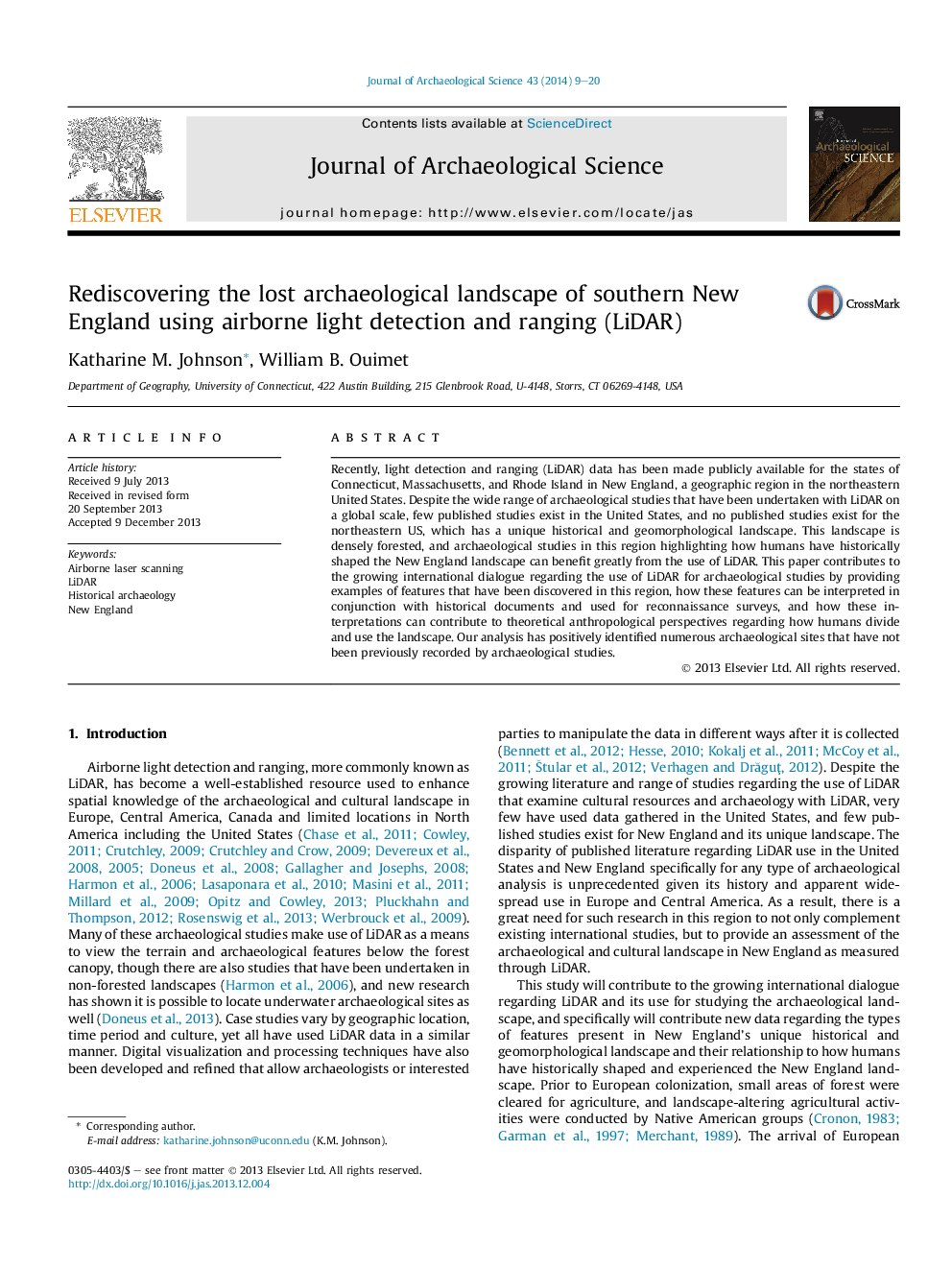| Article ID | Journal | Published Year | Pages | File Type |
|---|---|---|---|---|
| 7443557 | Journal of Archaeological Science | 2014 | 12 Pages |
Abstract
Recently, light detection and ranging (LiDAR) data has been made publicly available for the states of Connecticut, Massachusetts, and Rhode Island in New England, a geographic region in the northeastern United States. Despite the wide range of archaeological studies that have been undertaken with LiDAR on a global scale, few published studies exist in the United States, and no published studies exist for the northeastern US, which has a unique historical and geomorphological landscape. This landscape is densely forested, and archaeological studies in this region highlighting how humans have historically shaped the New England landscape can benefit greatly from the use of LiDAR. This paper contributes to the growing international dialogue regarding the use of LiDAR for archaeological studies by providing examples of features that have been discovered in this region, how these features can be interpreted in conjunction with historical documents and used for reconnaissance surveys, and how these interpretations can contribute to theoretical anthropological perspectives regarding how humans divide and use the landscape. Our analysis has positively identified numerous archaeological sites that have not been previously recorded by archaeological studies.
Related Topics
Physical Sciences and Engineering
Materials Science
Materials Science (General)
Authors
Katharine M. Johnson, William B. Ouimet,
